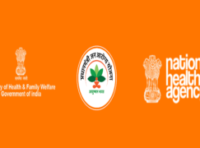The government of India has launched an integrated mission for the conservation of the Ganga River to eliminate its pollution and revive the river. This government scheme is known as the “Namami Gange Scheme.” The plan of action for cleaning up the Ganga River has been approved by the Union Cabinet, central government. Under this plan of action, the budget for cleaning the Ganga River has been quadrupled; moreover, Rs. 20,000 crore will be utilized for river cleaning by 2019–2020.
The total length of the Ganga River is 2525 km. The river basin is 1.6 million sq. km. Nearly 469 billion metrics of water flows in the river annually. The river provides 25.2% of the entire water source to our country.
Objectives
Namami Gange Scheme has been launched with an aim to ensure effective subsiding of air pollution and adopt the river basin for reviving the Ganga River. The scheme also aims to keep the balance of minimum ecological flows in the river water to maintain water quality and sustainable development.
The wholesomeness of the Ganga River has been divided into four concepts, namely, aviral dhara (continual flow), nirmal dhara (unpolluted flow), geological entity, and ecological entity.
What does the scheme include?
A total of 231 sub-schemes have been launched under Namami Gange Scheme. These schemes include rejuvenation of old ghats at Haridwar, Kanpur, Allahabad, Banaras, Ghazipur, Ballia, and Bihar. The schemes also encompass six places located in Bengal, new ghats, toilets, seating area, sewage treatment plant, oxidation plant bioremediation process.
Upon completion of the implementation of the scheme, the water flowing out of all major cities will not be released into the ocean untreated.
For more information click here.


![[Apply] MEITY Cyber Surakshit Bharat Training Calendar, Course List, Online Nomination Process, Registration Dates | Digital India Training Management Information System](https://sarkariyojanas.com/wp-content/uploads/2021/07/Cyber-Surakshit-Bharat-840x560.jpg)





